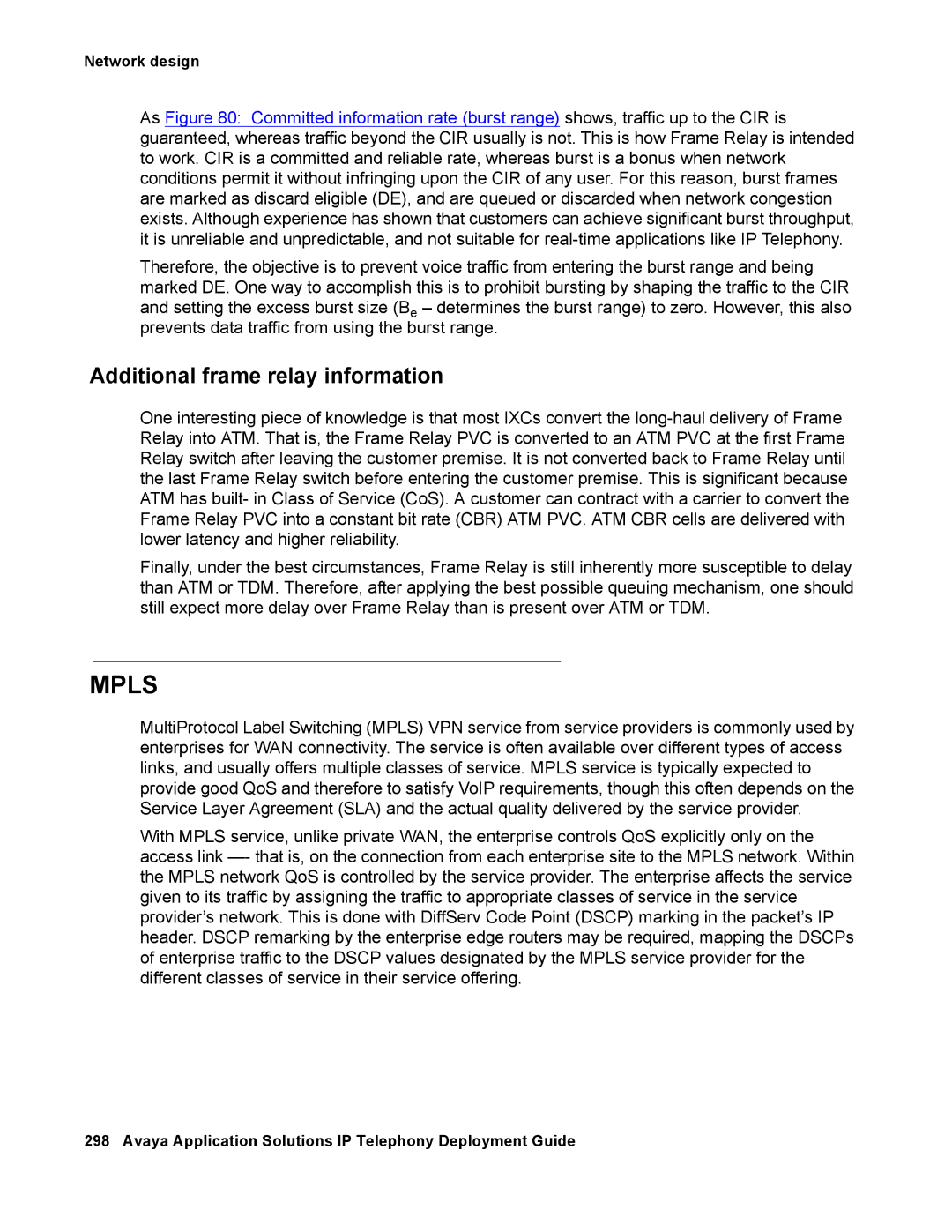Network design
As Figure 80: Committed information rate (burst range) shows, traffic up to the CIR is guaranteed, whereas traffic beyond the CIR usually is not. This is how Frame Relay is intended to work. CIR is a committed and reliable rate, whereas burst is a bonus when network conditions permit it without infringing upon the CIR of any user. For this reason, burst frames are marked as discard eligible (DE), and are queued or discarded when network congestion exists. Although experience has shown that customers can achieve significant burst throughput, it is unreliable and unpredictable, and not suitable for
Therefore, the objective is to prevent voice traffic from entering the burst range and being marked DE. One way to accomplish this is to prohibit bursting by shaping the traffic to the CIR and setting the excess burst size (Be – determines the burst range) to zero. However, this also prevents data traffic from using the burst range.
Additional frame relay information
One interesting piece of knowledge is that most IXCs convert the
Finally, under the best circumstances, Frame Relay is still inherently more susceptible to delay than ATM or TDM. Therefore, after applying the best possible queuing mechanism, one should still expect more delay over Frame Relay than is present over ATM or TDM.
MPLS
MultiProtocol Label Switching (MPLS) VPN service from service providers is commonly used by enterprises for WAN connectivity. The service is often available over different types of access links, and usually offers multiple classes of service. MPLS service is typically expected to provide good QoS and therefore to satisfy VoIP requirements, though this often depends on the Service Layer Agreement (SLA) and the actual quality delivered by the service provider.
With MPLS service, unlike private WAN, the enterprise controls QoS explicitly only on the access link
